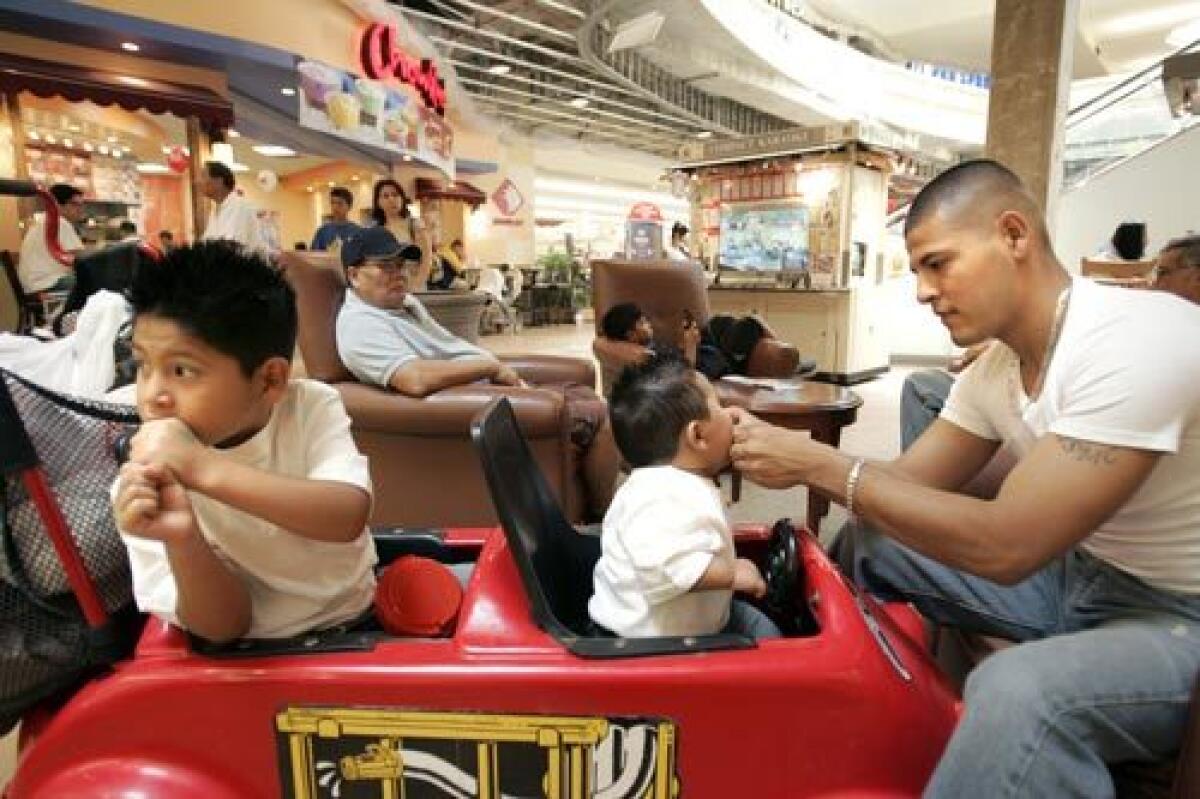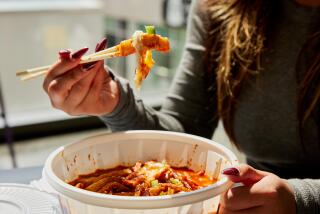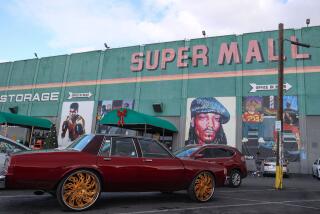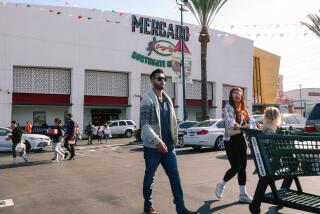A thriving Filipino community is anchored by a mall

First, Jollibee and Goldilocks -- both popular restaurants in the Philippines -- opened their doors in 2005.
The next year came Seafood City, a supermarket that features an almost endless supply of seafood and other Filipino specialties.
Today there are seven shops and restaurants clustered together at Eagle Rock Plaza, a mall that caters to thousands of local Filipino residents.
At the so-called Mall of Manila on Colorado Boulevard, Filipino immigrants can shop for clothes, send money home and eat pork stew and manay bread.
“That is ground zero,” said James Santa Maria, a Filipino real estate developer and local resident. “The mall has really come to symbolize the centerpiece of the Filipino community in Eagle Rock.”
Enclaves of ethnic shops and restaurants aren’t unique in Los Angeles. But in Eagle Rock, the Filipino-owned retailers and eateries are located within a mainstream mall, flanked by Target and Macy’s.
“They were taking a chance, and so were we,” said Bryan Paul, the shopping center’s general manager. “And it has been very successful.”
Although a historic Filipinotown was designated in 2002 near Echo Park, most of that neighborhood’s residents are Latino. Many Filipinos, educated and fluent in English before they immigrated, assimilated easily and settled in other areas, including Carson, West Covina and, in particular, Eagle Rock.
Filipinos started moving to that northeast Los Angeles community more than 40 years ago, drawn to the affordable homes, good public schools and proximity to downtown. Before long, they started opening their own businesses, said Awee Abayari, station manager of Eagle Rock-based Radio Manila.
Indeed, Eagle Rock has become an increasingly popular place to live and shop, with the opening of trendy new boutiques, galleries and restaurants along Colorado and Eagle Rock boulevards. Despite escalating home prices, the revitalized neighborhood has remained economically and ethnically diverse, a mix of Latinos, Asians and whites.
Of Eagle Rock’s roughly 30,000 residents, more than 6,000 are Filipino, according to Claritas, a San Diego-based demographic and marketing company. Community leaders say there are thousands more Filipinos in the surrounding areas of Highland Park, Mount Washington and Glassell Park.
“The Filipino population is gaining more in economic status, so they are able to move into bigger homes, build their businesses in communities that aren’t so urban,” said Jonathan Lorenzo, administrator of the Filipino American Library.
But there have been some growing pains. In 2002, Filipino community leaders sought to designate a 1.3-mile stretch of Eagle Rock Boulevard as Philippine Village, but a group of local homeowners opposed the plan and a contentious debate ensued. The homeowners argued that the designation would unnecessarily single out one ethnic group and would detract from the neighborhood.
The Los Angeles City Council ultimately approved a compromise -- a sign on the boulevard, not far from the mall, denoting the Philippine Village Community Center.
The neighborhood’s concentration of Filipinos is what attracted Seafood City, which has 13 grocery stores in California, to open a 21,000-square-foot supermarket at Eagle Rock Plaza. The store is the chain’s first in a mainstream mall, said senior vice president Jose Hontiveros.
“It was an experiment that really worked out well for us,” he said.
One of Seafood City’s challenges, however, was to ensure that the market’s fish was packaged well enough to mask any unpleasant odors.
On a recent day at the mall, Gerry Carlos filled his cart at Seafood City with groceries. Nearby, another shopper sat on a bench reading the Philippine News.
“It’s a one-stop shop,” said Carlos, a dental assistant who lives in Glendale. “You can get everything you want in one place.”
The most recent Filipino-owned shop to come to the mall is Fil-Mart, which opened in April. The store sells goods from the Philippines, including traditional clothing, karaoke machines and folk music.
“Our store is really like walking into Manila,” said Joanne De Leoz, whose family owns the shop.
De Leoz said it made sense for Fil-Mart to open its second location in a place that Filipinos were already frequenting. People come not just to shop, but also to meet up with friends after church or work, she said.
“It has really become a social gathering,” she said. “Whether they buy or not, they come in to talk. They really like to be amongst Filipino Americans.”
Celeste Peralta, 21, lives just a few blocks from the mall and comes at least once a week. On a recent visit, she bought pastries from Goldilocks bakery and a movie from one of the stands.
“I feel like I am back in the Philippines,” she said.
Filipinos aren’t the only customers, said Paul, the shopping center manager. Non-Filipinos are increasingly venturing into the Filipino-owned restaurants and shops.
“This mall is unique in its tenant mix,” he said. “But this community is unique in its cultural mix.”
Brian Heckman, a 20-year resident of the neighborhood and president of the Eagle Rock Neighborhood Council, said the Filipino shops and restaurants have enriched the community.
Santa Maria, the real estate developer, agrees. He said Filipinos were finally beginning to assert their entrepreneurial spirit and that the mall was a prime example of that.
“It’s the coming-out party for the Eagle Rock Filipino community,” he said.
anna.gorman@latimes.com
More to Read
Start your day right
Sign up for Essential California for news, features and recommendations from the L.A. Times and beyond in your inbox six days a week.
You may occasionally receive promotional content from the Los Angeles Times.






